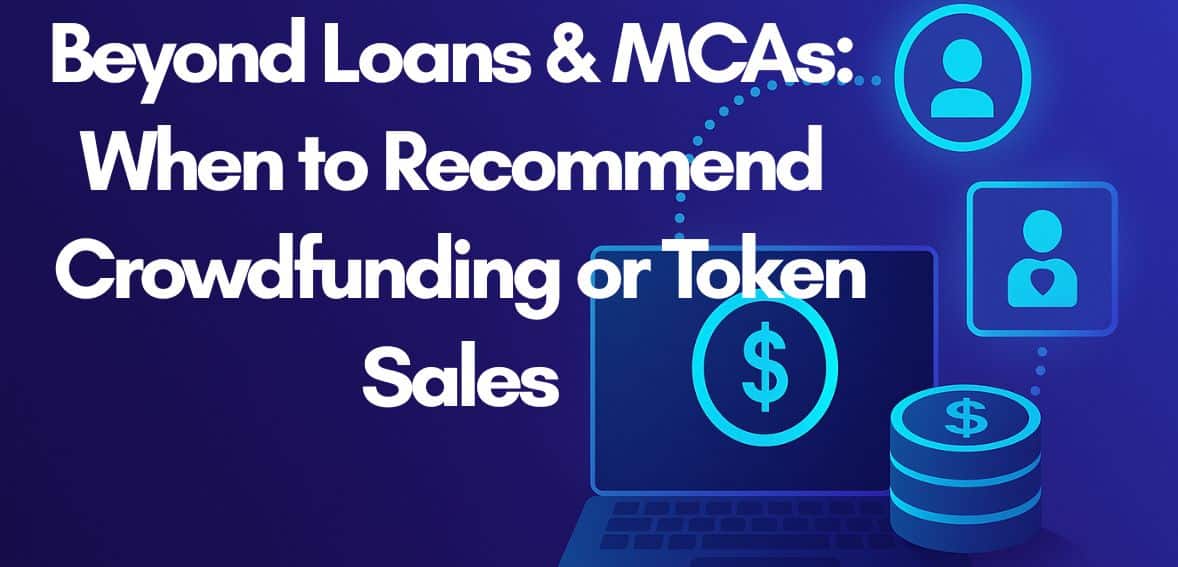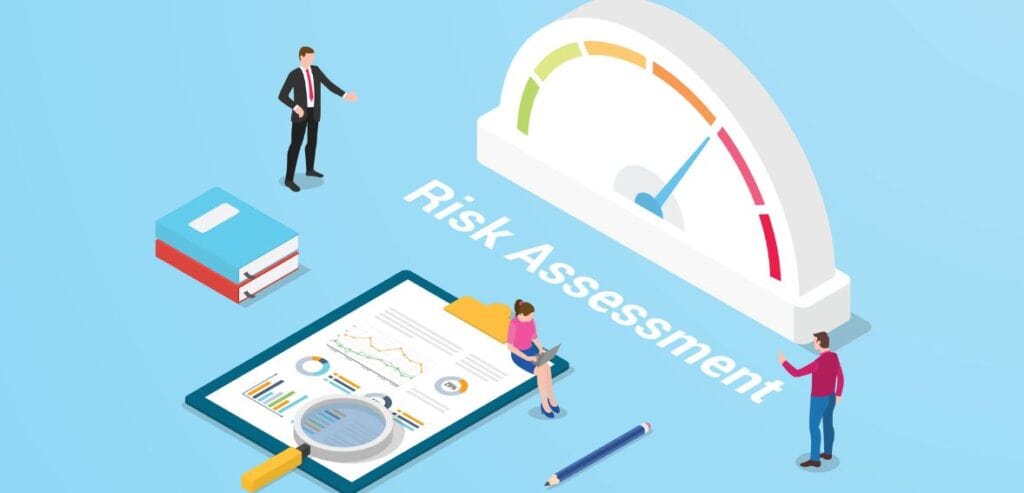
By Misty Molloy June 19, 2025
These days, if you ask a startup founder how they’re funding growth, the answer might surprise you. It’s not always about bank loans or merchant cash advances anymore. These days, if you ask a startup founder how they’re funding growth, the answer might surprise you. It’s not always about bank loans or merchant cash advances anymore.
Although these approaches are useful, they aren’t always appropriate for new or expanding companies that value adaptability, involvement in the community, or creative financing strategies. For example, a merchant cash advance can be helpful for short-term cash flow needs but may not align with long-term growth models or equity-free capital strategies.
Alternatives that provide access to funding without exorbitant interest rates or strict repayment terms are becoming more and more popular among entrepreneurs. Crowdfunding and token sales are two of the most attractive of these options. Despite their frequent interchangeability, each caters to different investor audiences, regulatory environments, and business needs. To decide when they’re the right move, it helps to break down how each one works, what they offer, and where they might fall short.
The Financing Shift: From Institutions to Individuals

A decade ago, you needed a banker’s nod to bring your product to life. Now? A compelling video and a loyal online community might get you there faster. Platforms like Kickstarter and Indiegogo have changed the way founders think about money. Block chain technology has also made it possible for businesses to issue digital tokens, frequently through Security Token Offerings (STOs) or Initial Coin Offerings (ICOs), opening up new avenues for liquidity. This change is indicative of a larger trend: both consumers and investors are more inclined to support initiatives that align with their interests or values rather than just those supported by banks.
Since the JOBS Act was passed in the United States, which permitted equity-based crowdfunding, crowdfunding in particular has experienced significant growth. These days, companies can raise millions of dollars in return for debt instruments (debt-based), company shares (equity-based), or future products (reward-based). When a company has a compelling story, a loyal following, and a product that appeals to early adopters, this model performs best.
When Crowdfunding Is the Right Fit

Businesses that provide goods or services to consumers, especially those in the tech, creative, and consumer goods industries, are best suited for crowdfunding. Before even releasing their product, it enables business owners to confirm demand, create buzz, and cultivate client loyalty.
A successful campaign may be used as proof of concept for upcoming distribution agreements or investment rounds. Crucially, unless crowdfunding is equity-based, in which case the equity stakes are usually tiny and dispersed among numerous micro-investors, ownership is not diminished. Crowdfunding also adds an integrated marketing feature. Every backer turns into a brand ambassador, helping to build early traction and spread the word.
Transparent companies that fulfill their commitments tend to have better networks and reputations. There are obstacles, though: creating a successful campaign necessitates careful planning, precise financial estimates, an engaging pitch, and knowledge of the law. Whether deliberate or not, breaking commitments can have negative effects on one’s reputation and even result in legal repercussions.
Understanding Token Sales in Business Financing

Through block chain networks, token sales—often confused with initial coin offerings (ICOs) and initial token offerings (STOs)—are a digital way to raise money. Token sales happen in decentralized settings as opposed to crowdfunding, which usually happens on centralized platforms.
Companies issue cryptographic tokens that stand for security (financial interest), equity (ownership stake), or utility (access to a good or service). These tokens are bought by buyers, who are frequently investors or early adopters, using cryptocurrencies like Bitcoin or Ethereum. Global accessibility is one of the main benefits of token sales. Participation is open to investors worldwide, giving companies access to a larger capital pool.
Additionally, smart contracts simplify the execution of transactions, enhancing security and cutting down on administrative burden. Regulatory ambiguity is still a major issue, yet. Token sales are governed by stringent laws in many nations, which categorize them as securities offerings. There may be fines or legal action for noncompliance. In order to ascertain the classification of their token and design the offering appropriately, companies must thus collaborate closely with legal counsel.
Although utility tokens are generally simpler to issue, their valuation and investor interest are limited. Tech-savvy startups, particularly those in the fintech or block chain space, are the ideal candidates for token sales. Token incentives can contribute to the creation of network effects, and these endeavors frequently require funding in order to expand their user base or build infrastructure.
That said, successful token sales require a well-documented white paper, a strong development roadmap, security audits, and clear utility or value proposition. Without these, investor trust can quickly erode.
What Business Owners Need to Know About Token Value
Let’s say you’re thinking of issuing tokens—what should you know? First, not all tokens are created equal. Some give buyers access to your app, others act more like mini-shares in your business.
If tokens are the fuel of your block chain project, tokenomics is the engine blueprint. Without a smart design—like limited supply, smart incentives, and real value—you’re just minting coins nobody wants. The economic framework of a digital token, encompassing its supply, distribution, and utility, is referred to as tokenomics. An effective token model specifies the number of tokens, their holders, their distribution over time, and their potential uses.
For example, a governance token might enable holders to cast votes on upcoming product features, whereas a utility token might provide access to premium services within a platform. The value of tokens can be significantly impacted by scarcity. Demand is often driven by limited supply, but excess supply can dilute value. Likewise, by lowering the amount of tokens in circulation, token burn mechanisms—the permanent removal of tokens from circulation—can aid in price stabilization.
Early investors may be deterred from dumping tokens on the market right away by lock-up periods, which involve removing them from circulation for a predetermined amount of time. Securities laws must be followed by security tokens, which stand in for conventional financial instruments.
These are much more difficult to start, but they give investors dividends, stock, or profit-sharing. Companies that choose this route are required to register with regulatory agencies, perform Know Your Customer (KYC) and Anti-Money Laundering (AML) checks, and make complete financial disclosures.
Evaluating Business Fit: When to Recommend Each Option

Choosing between crowdfunding and token sales isn’t just about the money—it’s about the mindset. A fashion brand may benefit more from a social campaign, while a decentralized finance startup might thrive with token-based funding. Evaluating the company’s objectives, target market, industry, and regulatory risk tolerance is necessary when deciding between crowdfunding and token sales.
Crowdfunding is frequently the better option for consumer goods with a large potential market and a strong visual appeal. It supports brand loyalty and validates consumer interest. On the other hand, businesses developing block chain apps, fintech solutions, or decentralized platforms are best suited for token sales.
Early user acquisition through token incentives is frequently advantageous for these companies. The desired funding speed should also be taken into account. Campaigning and preparation for crowdfunding can take months. Once organized, token sales can raise money quickly—sometimes in a matter of days.
On the other hand, the latter necessitates a larger initial investment in development, security, and legal activities. Scalability is an additional consideration. While crowdfunding usually encourages localized or niche support, a well-run token sale can result in worldwide recognition and exchange listings. The regulatory environment is arguably the most important determinant.
Traditional crowdfunding might be a safer option if the company operates in a the authority with supportive crowdfunding laws but ambiguous crypto regulations. On the other hand, countries that have adopted block chain regulation might offer a more favorable setting for token sales. As laws continue to change, entrepreneurs need to remain proficient and adaptable.
Real-World Success Stories: Insights and Lessons
Remember Pebble? Before smartwatches went mainstream, it raised millions through Kickstarter—proof that a great product pitch can be more powerful than a VC introduction. These companies raised millions quickly by utilizing strong product design, appealing incentives, and imaginative storytelling. Additionally, they reinvested backer feedback into product enhancements, building community loyalty and credibility.
Projects such as Filecoin, Tezos, and Ethereum demonstrated the enormous potential of token sales in the block chain space. These platforms drew active developer communities in addition to funding. The significance of utility, transparency, and trust was emphasized in each project. Tezos’ self-correcting governance model and Filecoin’s distributed storage concept offered distinct use cases that supported their token value.
However, the journey hasn’t always been easy. Crowdfunding and token sales both frequently fail, primarily as a result of overpromising, underdelivering, or improperly managing funds. The most prosperous endeavors viewed fundraising as a component of a broader plan rather than merely a short-term solution.
Navigating Risks and Managing Expectations

Every fundraising strategy carries some risk. Crowdfunding carries the risk of cost overruns, miscalculated demand, and delayed product delivery. The two main issues with token sales are speculative volatility and regulatory enforcement. Companies need to set reasonable deadlines, create backup plans, and communicate with their communities frequently.
Transparency should be the cornerstone of everything, including operational updates and financial usage. Creating vibrant communities prior to launch is also essential. This guarantees that early adopters are participants rather than merely investors. Token sales can be protected from market declines by providing value that goes beyond simple speculation. Continuing to communicate after a crowdfunding campaign concludes fosters trust and establishes the framework for subsequent offerings.
Conclusion: Empowering Business Through Smarter Funding Choices
Funding in 2025 isn’t about convincing banks—it’s about building belief. Whether you rally early adopters through crowdfunding or launch a token that powers your platform, the goal remains the same: connect, grow, and keep your vision alive.
Alternative paths that fit with today’s entrepreneurial realities—community-first thinking, technological fluency, and agile execution—are provided by crowdfunding and token sales. It takes a thorough grasp of audience behavior, technology capabilities, business structure, and regulatory risk to suggest the best course between token sales and crowdfunding.
Mastering this decision-making process enables entrepreneurs to create stronger, more active networks of users and advocates in addition to more efficiently obtaining capital. Businesses can overcome financial obstacles and achieve new heights of impact and scalability by utilizing these creative models.